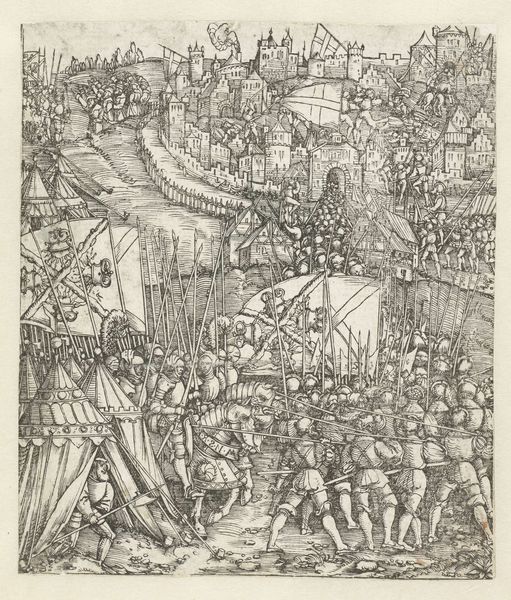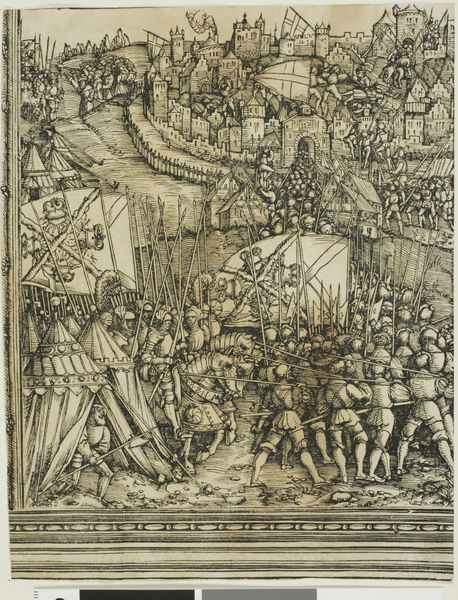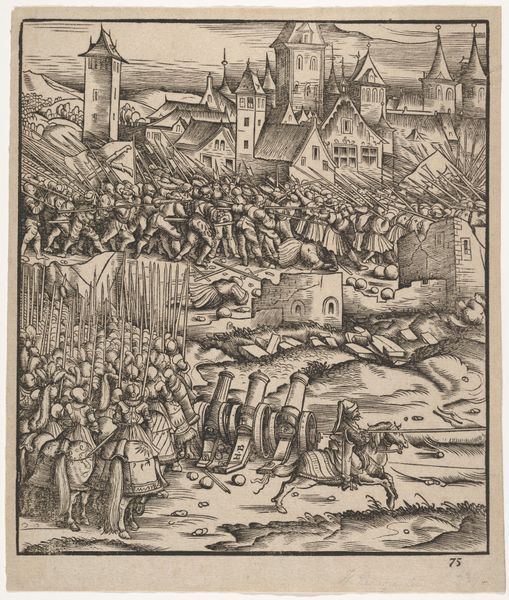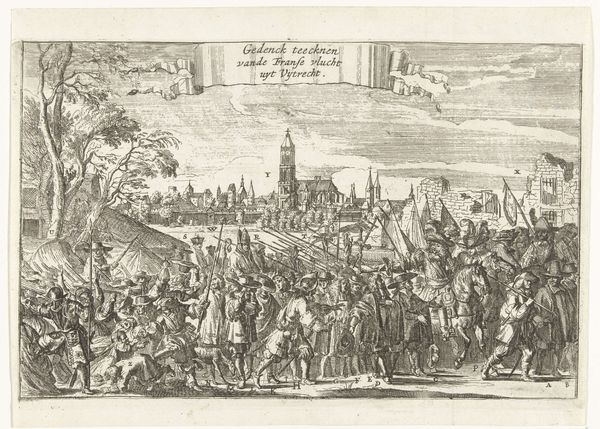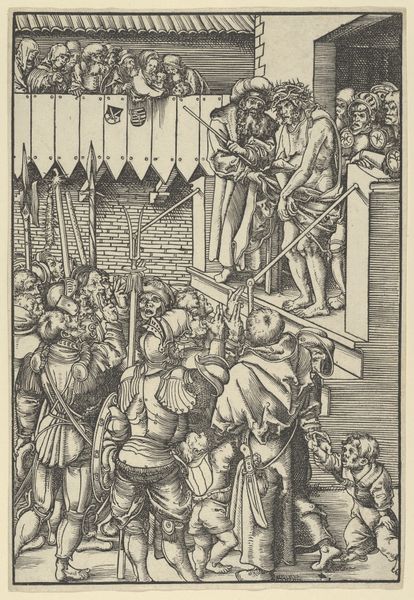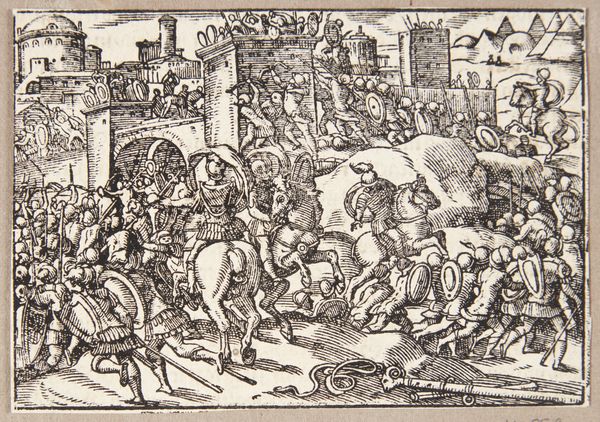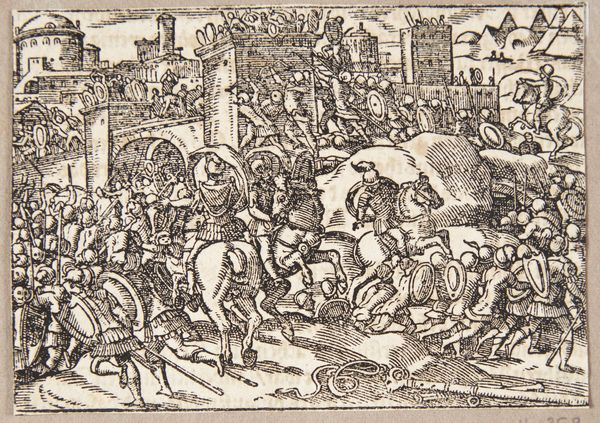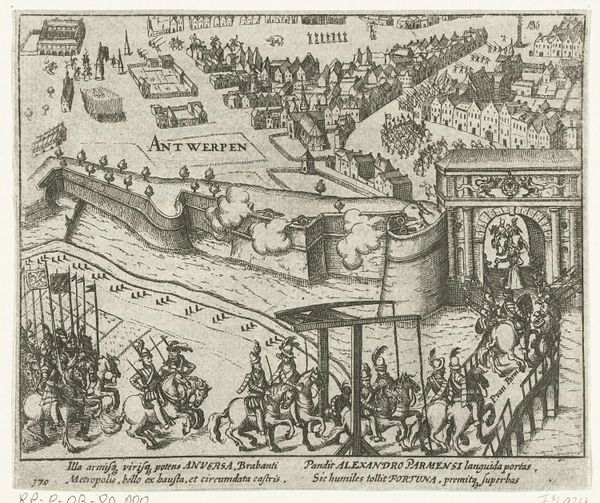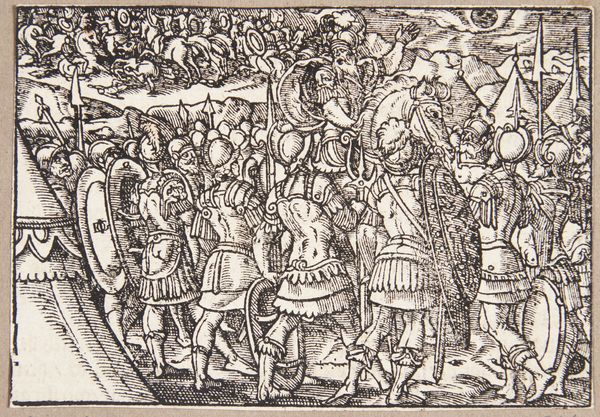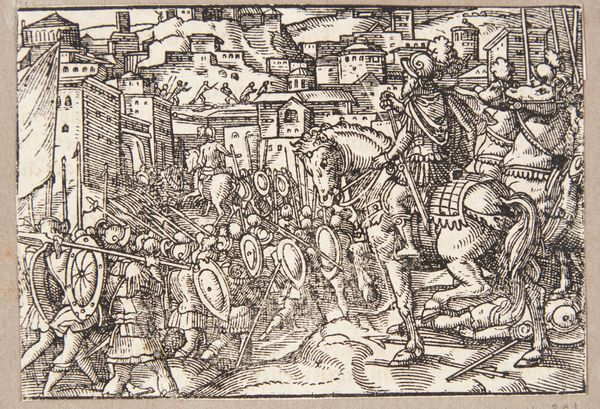
print, ink, woodcut, engraving
#
narrative-art
#
pen drawing
# print
#
pen illustration
#
pen sketch
#
figuration
#
ink line art
#
ink
#
woodcut
#
line
#
history-painting
#
northern-renaissance
#
engraving
Dimensions: height 175 mm, width 152 mm
Copyright: Rijks Museum: Open Domain
Editor: Here we have Hans Springinklee's "Expulsion of the Hungarians from Austria", made in 1515. It's a print, likely a woodcut or engraving, showcasing a historical scene. There's so much detail packed into this small space. The overwhelming number of figures and weaponry almost gives me a claustrophobic feeling! What story do you think Springinklee is trying to tell here? Curator: A violent one, certainly! This print, with its busy composition, illustrates a specific historical moment: the expulsion of Hungarian forces from Austria. I see it less as a purely objective record and more as a potent piece of propaganda. Springinklee, working within the Northern Renaissance style, uses the stark contrast of line and shadow to create drama. But propaganda for whom, and why do you think that is? Editor: Well, presumably propaganda favoring the Austrians. I mean, given the title, it's celebrating their victory. But how effective could a print like this really be? Curator: In the 16th century, before mass media, prints were a powerful tool for disseminating information and shaping public opinion, they visually solidified narratives and moral perspectives for mass consumption. Imagine this being circulated widely after the event, reinforcing the narrative of Austrian strength and Hungarian defeat. Do you think it idealizes the battle? Editor: It must. It certainly glosses over the brutality. I didn’t really think about its potential for influencing people like that. Curator: Exactly! It's a reminder that art, even seemingly "historical" art, is often deeply embedded in the politics and biases of its time. Editor: So it’s more than just a picture; it's a statement. Now I am more wary of artworks. Curator: Right. By learning to “see” through their message, we can begin to better understand our own preconceptions.
Comments
No comments
Be the first to comment and join the conversation on the ultimate creative platform.
